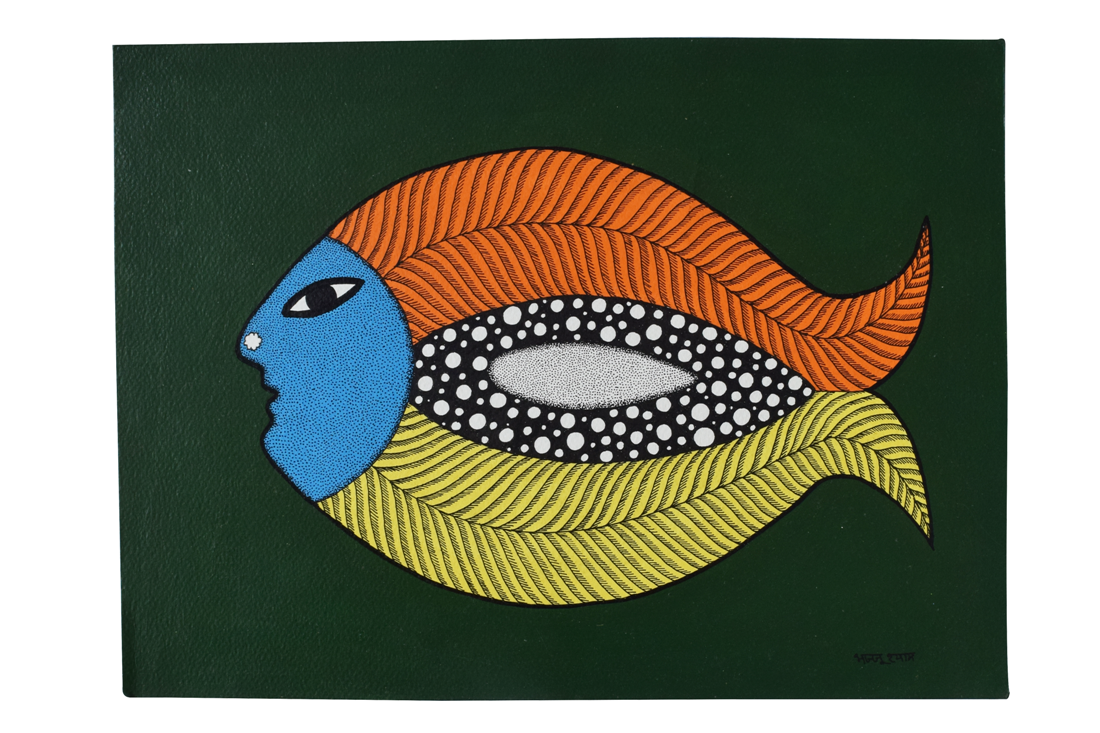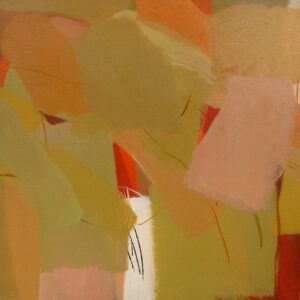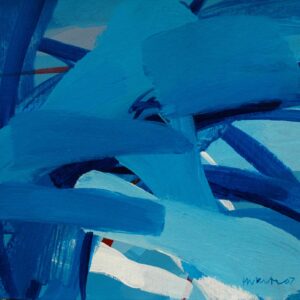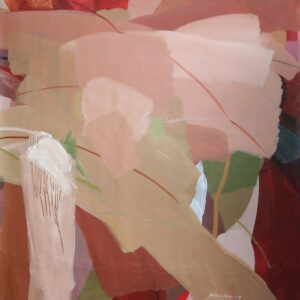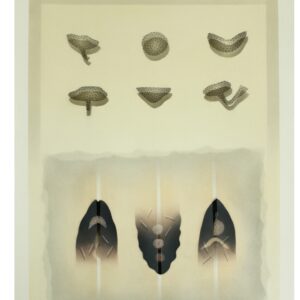Bhajju Shyam
Bhajju Shyam
- Title: Untitled
- Medium: Acrylic & Ink on Paper
- Dimensions: 11.0 × 14.9 inches
- Title: Untitled
- Medium: Acrylic & Ink on Paper
- Dimensions: 11.0 × 14.9 inches
₹70,000.00
1 in stock
Gond Art Large, often overlapping or composite motifs rendered in striking colours and filled with patterns that tell stories of centuries-old beliefs make Gond a unique Birds and animals seated in the shade of a tree with their heads within its lower branches; two Deers with a common head and antlers that emerge like branches of a tree. Birds meshed into the form of a grain container. Birds and animals gathered around the bana, a sacred string instrument, an elephant with wings joyously flying in the blue sky. A Mahua tree with a parrot, tiger, and boar as if emerging from its base. These expressions merging the revered, the real, the mythological and the imagined are the hallmarks of Gond Art. With the outlines of individual and composite forms rendered in flowing lines, each image brought alive with striking colours and filled with patterns, the paintings amaze the viewer with their composition, patterns, colours, creativity and the centuries-old and contemporary stories they tell. And it is their singular beauty that has fascinated art lovers in India and across the world. Gond artists belong to the Pardhan sect of the Gond tribe, one of the largest indigenous communities of Central India, living in parts of Southeast Madhya Pradesh and adjoining areas in Chattisgarh. Traditionally, the Pardhans were bard-priests and from a young age learnt Gond rituals along with myths, legends, and historical events that they narrated during ceremonies. And it is this rich oral knowledge (that they inherited and passed down generations) along with the natural world around them that Gond artists draw from. The origins of Gond painting, now rendered on paper and canvas, are traced to the digna-a pattern made on the floor and walls of homes and courtyard. In 1980s, artists like Jangarh Singh Shyam began painting on paper, and were soon painting dynamic and wondrous compositions filled with small patterns and striking colours drawn from Gond oral narratives. Jangarh Singh Shyam established his own style; made Gond art portable as it came to be worked on paper, cloth, and canvas with pen and ink as well as acrylic paint and established the Gond idiom of painting. He then encouraged his family and other members of the Pardhan community to paint in their individual styles.
About Bhajju Shyam
Bhajju Shyam is a renowned Gond Artist from Madhya Pradesh, India, who gained global recognition through his book The London Jungle Book. His Uncle, Jangarh Singh Shyam, who was the first Gond Artist to use paper and canvas for his artworks, mentored Bhajju Shyam. The Gonds, the largest tribal Community in India are of Dravidian origin and can be traced to the pre-Aryan era. The word Gond comes from Kond, which means green mountains or lived in the green mountains. The Gonds paint their walls with vibrant depictions of local flora, fauna and Gods such as Marahi Devi and Phulvari Devi (Goddess Kali). Traditionally, they were made on festive occasions such as Karwa Chauth, Diwali, Ashtami and Nag Panchmi. Gond painting depicts various celebrations, rituals and man’s relationship with nature. The artists use natural colors derived from charcoal, colored soil, plant sap, leaves, and cow dung. This mystical art form is created by putting together dots and lines. The imaginative use of the line imparts a sense of movement to the still images. The paintings are an offering in worship of nature, and are also a mode of seeking protection and warding off evil. In the eyes of a Gond artist, everything is sacred and intimately connected to nature. The Pardhans, a small sub group of the Gond tribal community in the Mandala district of Madhya Pradesh is known for their visual creativity. In 1982 some of the Pardhan Gond painters like Jangarh Singh Shyam and Narmada Gond started painting on paper. To begin with the subjects of their paintings were confined to the images of their god and goddesses, myths and folk tales, birds and animals. They developed a more unique style of painting using bright colors and simple forms decorated with dots and lines. Subsequently this style has come to be popularly known as Gond painting.


